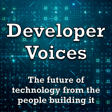
Writing a CAD Language in Rust (with Adam Chalmers)
Given how many languages have been written in C over the years, it’s not surprising to see new languages being written in Rust. What is surprising about this week’s guest is the domain he’s writing for: Computer Aided Design (CAD). Could Rust be sneaking its way into the CAD world too?
Joining me to discuss the design and implementation of a CAD programming language is Adam Chalmers. He works at Zoo, developing KCL - a language that looks like JavaScript, runs on Rust, and offers users a seamless hybrid experience of both coding and point-and-click modelling. So, how does that all fit together?
In this episode we look at the design and implementation of a programming language in Rust; how KittyCAD creates that hybrid environment for text-based programming and point-and-click modelling; and how we can learn to write our own Rust-interpreted languages.
–
Adam’s Blog: https://adamchalmers.com/
Adam’s Guide To Writing Parsers: https://www.youtube.com/watch?v=QF3kMyzMC40
Zoo’s Modelling App: https://zoo.dev/modeling-app
Mechanical CAD: https://zoo.dev/blog/mechanical-cad-yesterday-today-and-tomorrow
A Lego brick in KCL: https://zoo.dev/docs/kcl-samples/lego
Winnow: https://docs.rs/winnow/latest/winnow/
Nom: https://docs.rs/nom/latest/nom/
Factorio: https://www.factorio.com/
Satisfactory: https://store.steampowered.com/app/526870/Satisfactory/
Crafting Interpreters: https://craftinginterpreters.com/
Coding in Antarctica: https://brr.fyi/
Support Developer Voices on Patreon: https://patreon.com/DeveloperVoices
Support Developer Voices on YouTube: https://www.youtube.com/@developervoices/join
Adam on Mastodon: https://mastodon.social/@adam_chal@hachyderm.io
Kris on Mastodon: http://mastodon.social/@krisajenkins
Kris on LinkedIn: https://www.linkedin.com/in/krisjenkins/
Kris on Twitter: https://twitter.com/krisajenkins
